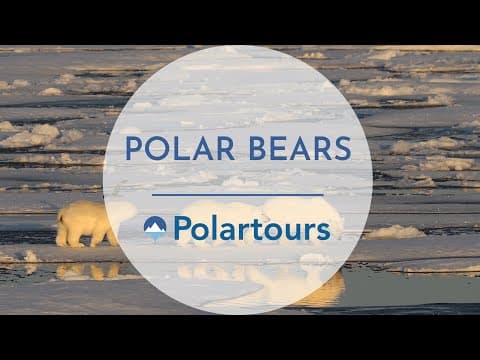Antarctica
Arctic
Artic
Info
Antarctica
Arctic
Artic
Info
%3Aformat(webp)%2Fanimal%2F936bafae-8faf-42c0-a8fb-36d73a27d5d3-polar_bear_anwr_1.jpg&w=1920&q=75)
Our Expert Says… "A bear encounter is a real highlight for any Arctic cruise. If you want to see polar bears it's vital that you bring binoculars with you - although we hope for close encounters, we don't always get as near as we would like. My favorite fact about polar bears is that their fur isn't white - it's actually transparent! It's the structure of the hair that gives it the white appearance."
Polar bears need little introduction for most people! These remarkable predators are not only the largest bears in the world but also its largest predatory carnivore.
Weighing up to 700kg (1,500lb) and almost 3m (10ft) in length, male polar bears are around twice the size of females. As well as insulating fur, polar bears have a layer of body fat up to 4” thick to protect them from the cold. This is so effective that polar bears start to overheat rapidly when the air temperature rises above 10C (50F).
Another key adaption for living in an icy cold habitat is the polar bear’s feet. Adult polar bears can have feet over 30cm (12”) across, and these both help to spread the vast weight of the bear when walking over thin ice or snow and give the bear a powerful swimming stroke. The feet and legs can also give the polar bear a surprising turn of speed. When breaking into a sprint polar bears have been clocked at 25mph.
Polar bears also have a remarkable sense of smell. Studies have shown that adult polar bears can smell a seal that is buried under 1m (3ft) of snow from almost a mile away.
Unlike other bears, polar bears don’t fight for territories. However, in the breeding season, males will fight for breeding rights over individual females, and these contests are often vicious. Male polar bears are active all year round, whereas pregnant females will semi-hibernate in “maternity dens” between autumn and spring when they give birth.
Polar bears hunt for ringed seals and bearded seals. Their main hunting technique is to wait stealthily near to seal breathing holes in the ice. When they smell that a seal is coming up to take a breath, they drag it out onto the ice with a paw and then crush the seal’s skull with their jaws. They will also hunt by stalking seals who have hauled out on the ice to rest. The polar bear will stealthily approach to within about 30 or 40ft and then break into a sprint to rush the seal before it can reach the safety of the water.
Polar bears are found within the Arctic circle as far south as Newfoundland, and up to about 88 degrees latitude. They are found in Greenland, Svalbard, Russia, Alaska, and Canada. The species is currently listed as vulnerable, with the most recent estimates of the population being around 30,000 individuals remaining worldwide. The current warming trend of climate change represents the gravest threat to the long-term survival of polar bears, relying as they do on solid sea ice to hunt seals. Reduction and fragmentation of the pack ice is forcing polar bears to swim further at the cost of energy reserves and the reduction in the availability of suitable habitat in which to hunt seals impacts female fertility and cub mortality, as well as body condition of males.
The Polar Bear, at home on the pack ice, can also swim over 60 miles/100 kilometres in the open sea, and it is considered to be a terrestrial and a marine mammal!

%3Aformat(webp)%2Fanimal%2F936bafae-8faf-42c0-a8fb-36d73a27d5d3-polar_bear_anwr_1.jpg&w=1920&q=75)
%3Aformat(webp)%2Fanimal%2F24dbf363-340e-421f-9425-e99245bc3b1f-polar_bear_-ursus_maritimus-_assessing_its_environment_for_potential_natural_enemies.jpg&w=1920&q=75)
%3Aformat(webp)%2Fuser%2Fe729e780-1fbe-4cc2-ad7c-faf67d440e2b-bruna-garcia.png&w=1920&q=75)
Your contact
Bruna
%3Aformat(webp)%2Fuser%2Fe729e780-1fbe-4cc2-ad7c-faf67d440e2b-bruna-garcia.png&w=1920&q=75)